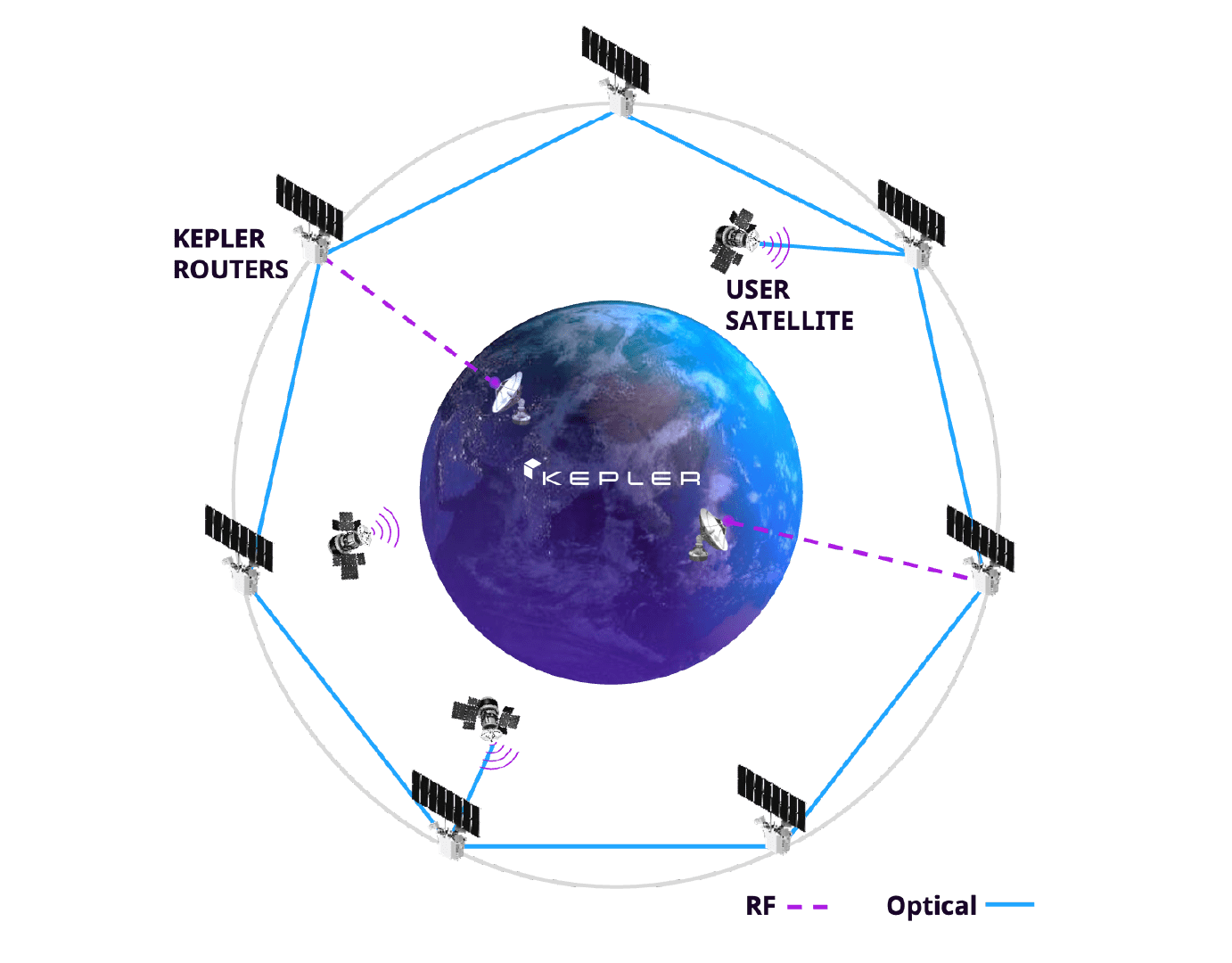
TAMPA, Fla. — Canadian small satellite operator Kepler Communications said April 13 it has raised $92 million to start deploying an optical data-relay constellation next year.
Early-stage investor IA Ventures led the Series C round, which brings the total amount Kepler has raised by selling equity to more than $200 million.
The company currently operates 19 satellites in sun-synchronous orbits that provide low-data-rate connectivity for devices out of range of terrestrial networks. Two more are onboard a D-Orbit orbital transfer vehicle awaiting a Falcon 9 ride-share launch SpaceX has scheduled for April 14.
Most of the satellites in this constellation are the size of six cubesats, a standard form factor measuring 10 centimeters on each side.
Satellites for the company’s data relay network will be an order of magnitude bigger and weigh over 100 kilograms, Kepler CEO Mina Mitry told SpaceNews, and be placed along two near-orthogonal planes in sun-synchronous orbits to enable continuous communications with low Earth orbit (LEO) satellites.
According to Kepler, the data relay network would provide real-time connectivity for LEO satellites that can currently only relay information when passing over approved ground stations.
Mitry said the network would adhere to optical communications standards developed by the Space Development Agency and use SDA-compatible optical user terminals.
The operator plans to launch prototype satellites for the data relay network this fall to test, validate, and demonstrate the technology.
The plan is to begin deploying the first plane of data relay satellites in 2024 for initial services by early 2025 from what it is calling The Kepler Network.
He said Kepler “will announce some of our launch plans in the near future.”
Kepler has previously outlined plans for 140 satellites in total.
“Our plans for both constellations are scalable,” Mitry said, and while “we are focused on building out our new optical data relay constellation, our existing constellation will be maintained and augmented as needed to meet the needs of our customers.”
Kepler currently builds its satellites in-house and Mitry said the company is “actively expanding our ability to meet future needs, ensuring our satellites are built on an optimal timeline.”
The Kepler Network marks a shift away from earlier plans for a data relay constellation the company had called Aether that would have primarily used S-band for inter-satellite links. Although Kepler has decided to instead prioritize optical technology, Mitry said there are still plans to provide data relay services in S-band from the network.
Other investors that supported the company’s Series C round included Costanoa Ventures, Canaan Partners, Tribe Capital, and BDC Capital’s Industrial Innovation Venture Fund.
Related
ncG1vNJzZmiroJawprrEsKpnm5%2BifKyxz6Wcq2WTpLquwc2impqsmaS7tHnRmqCsnaNihnN5zKKjpaGfo3qnu9FmpqmsmZiurXnDmquaZaKauaLFjKecra%2Bfp7hw